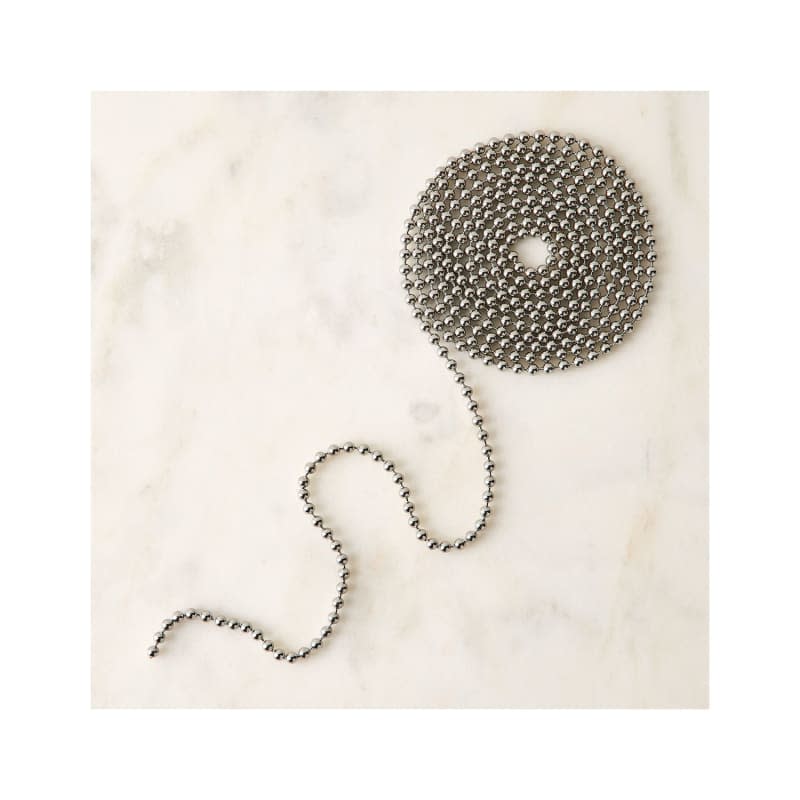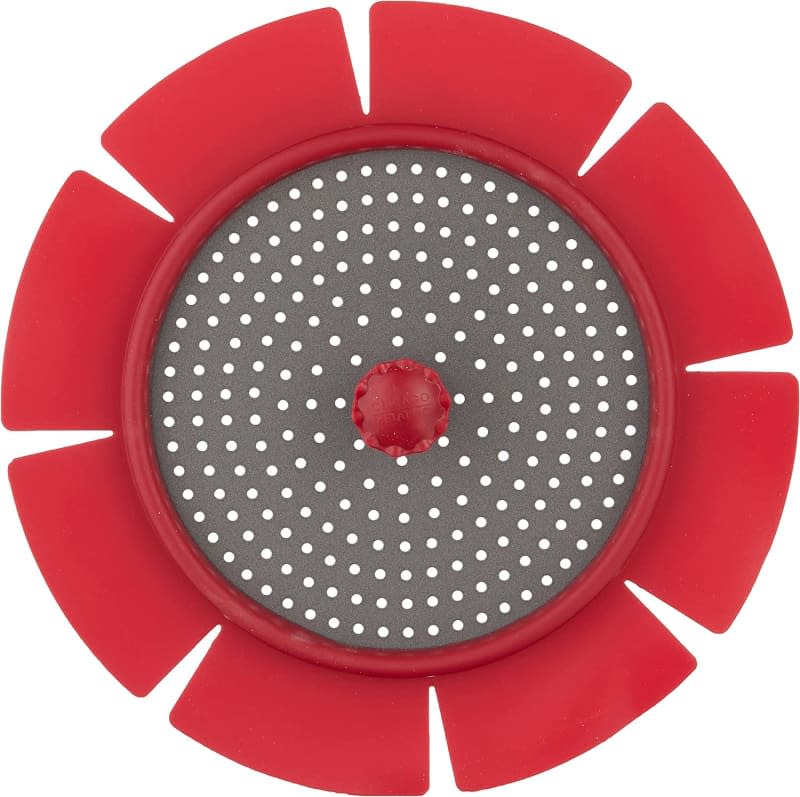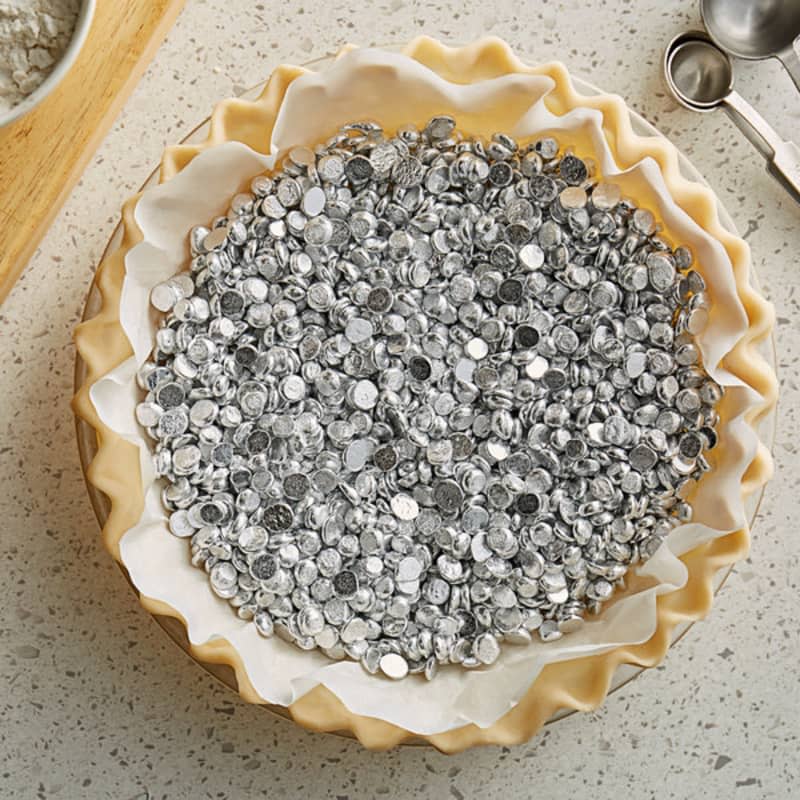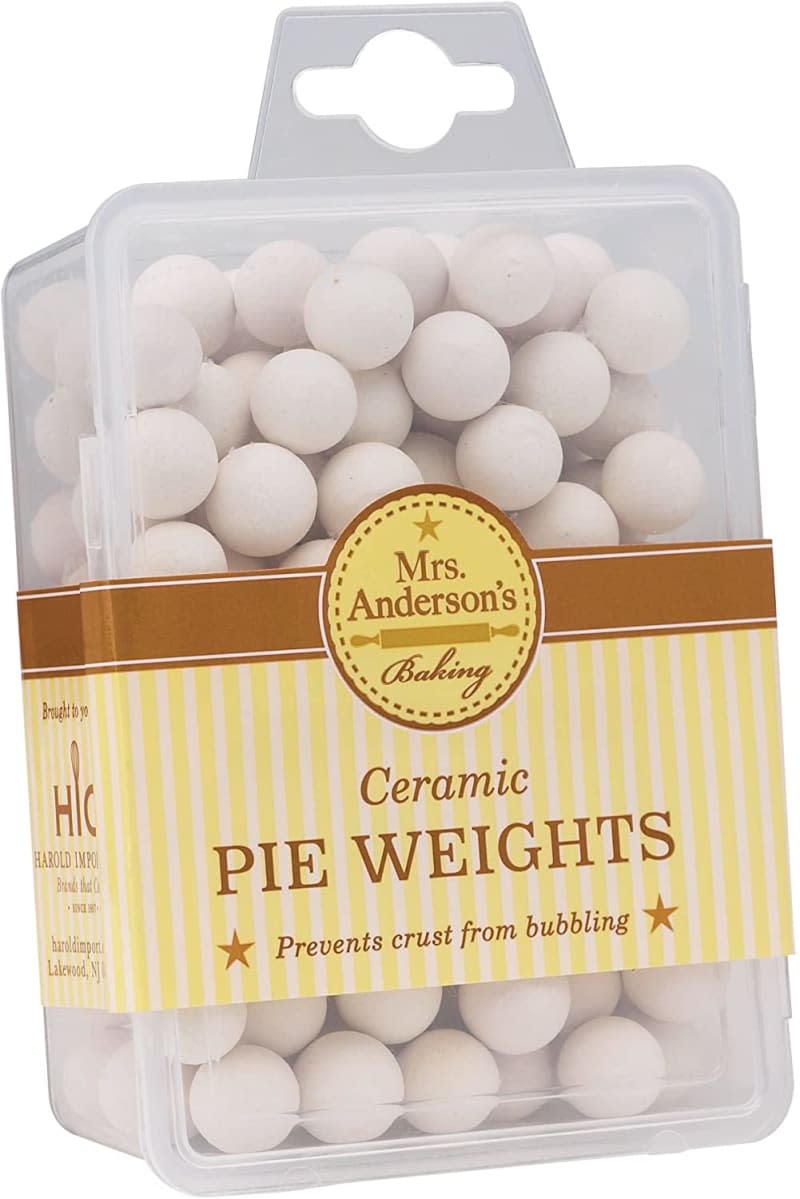We Tried 5 Different Types of Pie Weights — And Your Pie Crust Will Never Slump Again
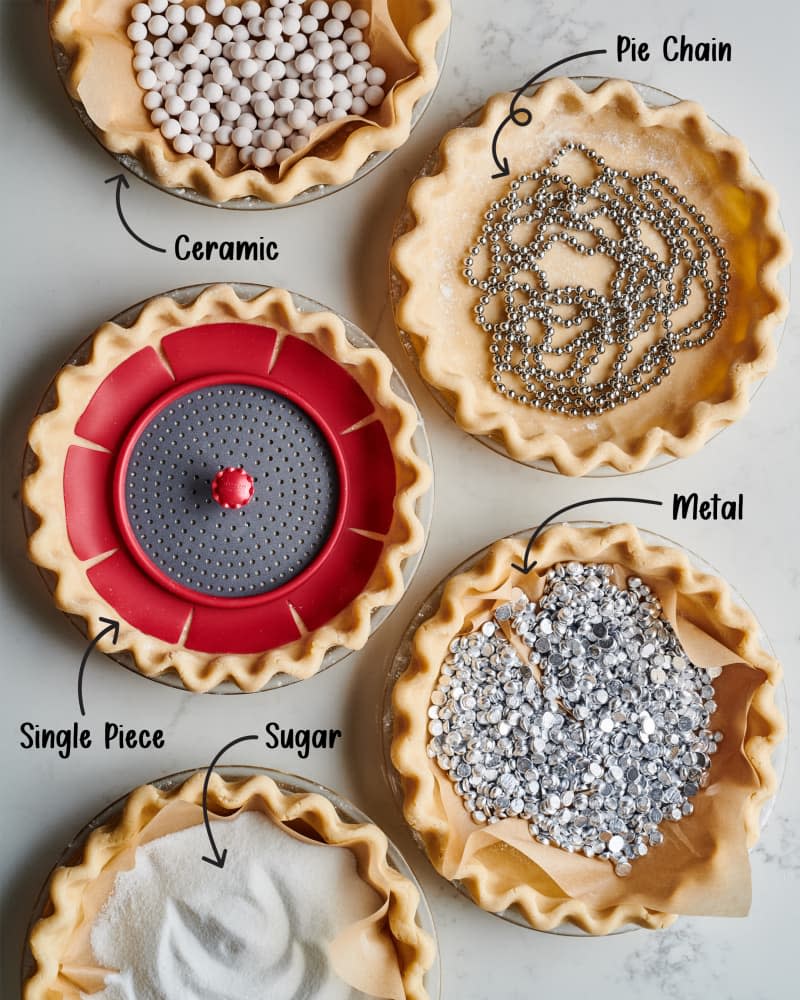
Whenever I bake a pie, I get this tiny voice in my head, whispering over and over again, “No soggy bottoms.” Disregarding the fact that the voice sounds a lot like Paul Hollywood from The Great British Bake Off, that little voice is still right — spending hours making a pie only to have it end up with a soft-bottomed crust is just upsetting.
So how do you ensure this doesn’t happen? You blind bake the crust, which requires baking the crust before filling it. This ensures the bottom is crisp and will cook through, even after you’ve added your wet filling. While you don’t technically need any special tools for this job, some people (myself included) prefer to have pie weights on hand.
Which type of pie weight should you get? Well, that’s what this post is for. I tested some of the most popular types to find out which ones do the best job, are easiest to handle, and are the most cost-effective.
Here are the best pie weights, ranked from worst to best.
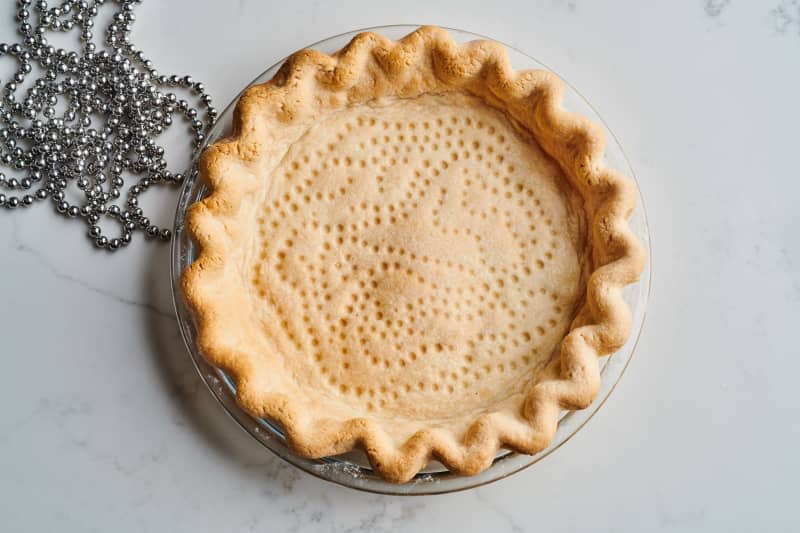
Pie Weight Tool: Beaded Pie Chain
Pie crust: 1/5
Ease: 1/5
Price: 1/5
Rating: 1/5
A beaded pie chain lacks the “weight” part of pie weights, which is why it failed in our testing. The pie chain I used was a single chain of tiny weights, measuring a — surprising! — 10 feet long and weighing less than half a pound.
To use it, you coil the chain inside the base of the pie crust (sans foil or parchment paper, which is typically used to hold pie weights) and put it in the oven. The pie chain lacked the weight or the bulk to prevent the sides of the pie crust from slumping. Pie dough bubbled up between the gaps of the pie chain’s coils and the chain left little ball-shaped impressions in the crust (although this kinda looked pretty?).
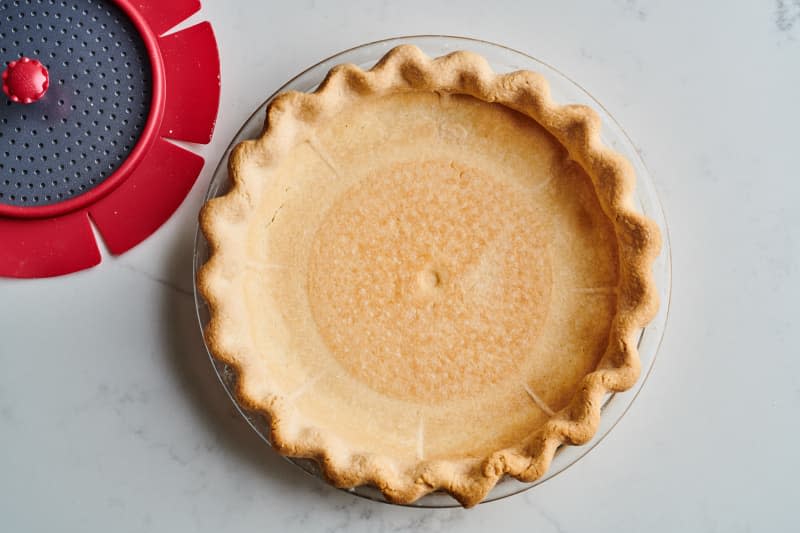
Pie Weight Tool: Single Piece Pie Weight
Pie crust: 2/5
Ease: 2/5
Price: 1/5
Rating: 2/5
I bought this single-piece pie weight and had high-ish hopes for it based on the near-perfect rating on Amazon. While it did fare better than the pie chain, it ultimately wasn’t a winner. This product weighs about 0.3 pounds and has a perforated metal disk encircled by silicone flaps. To use it, I placed it on the base of the pie crust, with the flaps flaring up against the sides of the crust. Again, this pie piece lacked the weight needed to properly blind-bake the crust, so the crust slumped a bit.
As Cook’s Illustrated notes, this pie weight works okay with doughs made from a mix of butter and shortening. However, in my expertise, if it doesn’t work with all types of crusts, it’s not a great pie weight. This pie weight also made impressions in the base of the pie crust, and because some parts of the weight were made from metal and others from silicone, the weight itself heated unevenly, causing the crust to bake unevenly, too.
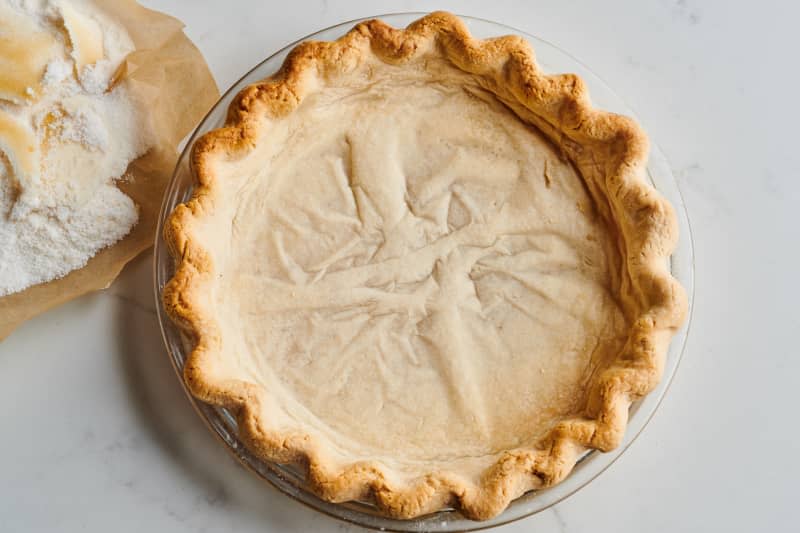
Pie Weight Tool: Sugar
Pie Crust: 4/5
Ease: 3.5/5
Price: 5/5
Rating: 4/5
Instead of comparing the pie weights to beans or rice (two commonly used pie weight alternatives), I chose good old granulated sugar. We’ve written at length about why sugar makes for a better pie weight, but one of the best parts is that you can get toasted sugar out of this method (which can be used in other desserts!).
The sugar successfully weighed down the bottoms and sides of the crust, so there was no slumping. However, I noticed there was more bubbling at the base of the pie than the two best pie weight options I tested. The sugar was also harder and messier to remove than the solid pie weights — a bit of it did breach the edges of the parchment paper and fall onto the pie crust itself. However, it’s the most cost-effective option of the bunch and one that I’d employ if I didn’t have any pie weights handy.
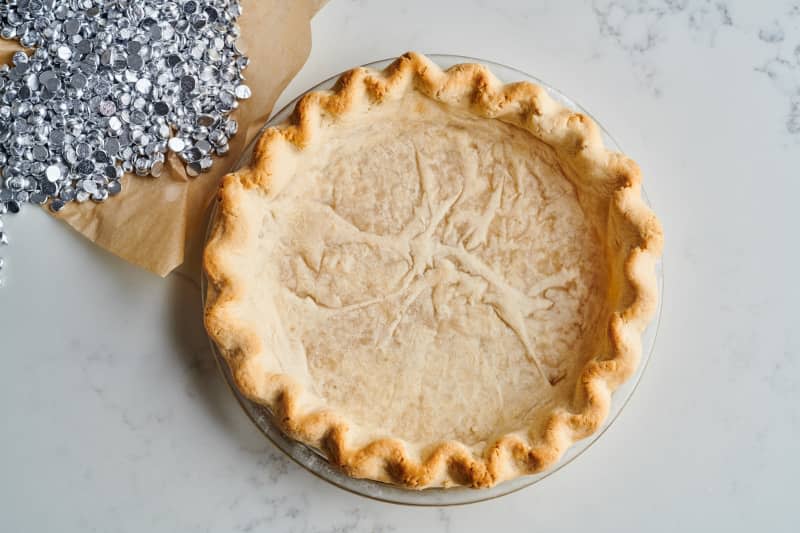
Pie Weight Tool: Metal Pie Weights
Pie Crust: 5/5
Ease: 5/5
Price: 3/5
Rating: 4.5/5
These aluminum pie weights come in a two-pound package, which is enough to fill a 9-inch pie crust. To use, I lined the crust with parchment paper and pressed the weights into an even layer to make sure they were flat against the bottom and sides of the crust. The pie crust baked up nicely, with no major slumping or bubbling. I also liked that the plastic container the weights came in was spacious, making it easy to pour the cooled weights back into after baking.
The biggest drawback of these weights was their price: At more than $70 for a box, they were the most expensive of all the weights I tried and might not be economical for the casual baker.
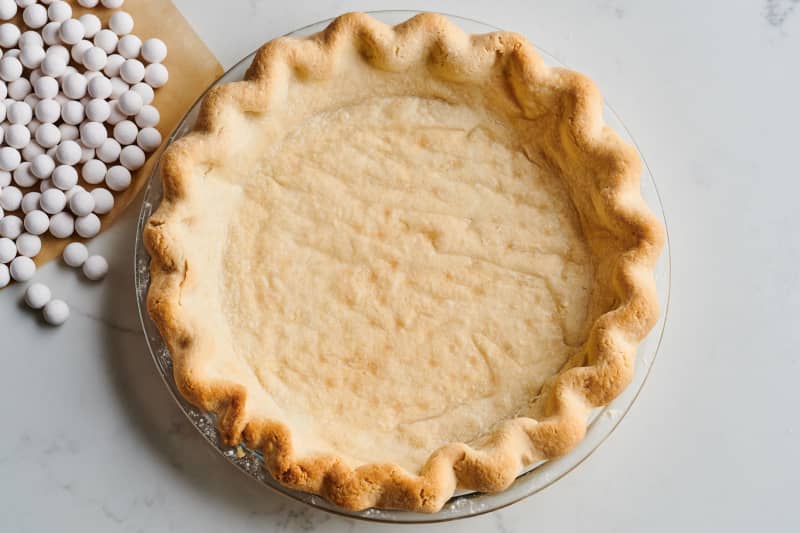
Pie Weight Tool: Ceramic Pie Weights
Pie Crust: 5/5
Ease: 4/5
Price: 4/5
Rating: 5/5
These ceramic pie weights performed just as well as the metal pie weights, but are much less expensive overall. Each package contains about half a pound of weights — to fill an entire 9-inch pie shell with enough weights to properly blind bake the pie, you’ll need 2 pounds (or 4 packages) of these pie weights, so definitely increase the quantity when you’re shopping.
To use these, I lined the pie crust with parchment and filled it with the ceramic weights. And, hip hip hooray! The crust didn’t bubble or puff, and the sides didn’t slump. The frustrating thing about these pie weights is that you have to buy them in four separate containers, so it’s harder to pour the cooled pie weights back into their individual vessels. However, you can easily store them in a large reusable container or resealable bag.
How I Tested the Pie Weights
To see which pie weights worked the best, I tested four different kinds — ceramic, metal, a pie chain, and a single pie piece — and compared them to regular sugar, which is Kitchn’s favorite method (as opposed to beans or rice). I used each tool to bake an all-butter pie crust using a 9-inch pie plate.
What are your go-to pie weights? Let us know in the comments.
